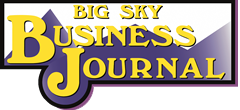9th District Customers Skittish
By Haley Chinander, Federal Reserve Bank of Minneapolis
Companies reported in a survey that profits and revenue declined, and some observed that additional economic uncertainty made already price-sensitive customers more skittish. The January survey received 568 responses from business owners across the Ninth District of the Federal Reserve Bank which includes Montana.
Amid this uncertainty, more businesses reported pulling back on hiring but for varying reasons. Many respondents mentioned that heightened labor costs hindered their ability to hire, while others noted that improved labor availability and slower turnover lessened their hiring needs.
Businesses also said that price increases moderated since last year, and their outlook was solidly positive.
Revenue declined for 44 percent of firms compared with the same quarter last year. Profits were also reportedly lower for nearly half of firms.
Expectations for future revenue and profits leaned negative as well, with 36 percent of respondents expecting declines in revenue over the next quarter and 30 percent expecting revenue to increase.
Respondents noted that heightened input and labor costs continued to chip away at their profits. Many also mentioned that their customers or clients were increasingly tightening their belts and unwilling to make large purchases.
“It appears that inflation is really having an effect on people’s spending,” observed the owner of a Minnesota accommodation business. “People generally have less to spend, thus we have seen a decrease in our gross revenue.”
Other respondents mentioned that increased economic uncertainty, especially due to proposed changes in federal policy, was creating concerns about future input costs and demand. “We are anxious about any possible tariffs,” wrote a North Dakota alcohol beverage retailer. “We significantly felt the impacts of the last round of tariffs in 2018 [and] 2019. We tried to stock up in advance of price increases to be competitive.”
Unusual winter weather patterns also continued to impact businesses in different ways. Some retail and accommodation businesses that depend on winter weather saw improved snow coverage and lower temperatures this year. “We are a motel that caters to winter sports enthusiasts, the amount of snow this year … has made a significant increase in business,” commented a respondent in the Upper Peninsula of Michigan (U.P.).
Other businesses, even within the same state, weren’t so lucky with snowfall. A resort owner further west in the U.P. reported poorer snow conditions: “We took on this business because past numbers looked good,” but there’s “no winter up here and no winter tourism anymore.”
As heightened costs and economic uncertainty strained firms, hiring slowed to its lowest levels in the last three years. Nearly half of businesses were not hiring, and of those that were, only 18 percent were looking for new full-time workers.
The reasons for this pullback in hiring varied among respondents. Many pointed to declining revenue and difficulties affording wages. “Employees expect better pay. I’m not saying they don’t deserve [it]. Just that we can’t afford it,” wrote the owner of a Twin Cities construction firm.
Notably, most businesses were still reluctant to reduce staff despite declining revenue and heightened costs. Only 8 percent indicated they were actively cutting staff, and a majority expected numbers to simply stay flat in the next six months.
Some business owners mentioned other ways of alleviating labor costs without reducing staff. “We’ve been on reduced hours in our manufacturing area … due to reduced customer orders,” wrote a manufacturer in the U.P.
“We had to cancel health care & other insurance coverage for our staff due to high costs,” added the owner of a Minnesota retail business.
Other firms pulled back on hiring because they had success in becoming fully staffed as labor availability improved. Turnover was reportedly flat for three-fourths of firms, and the share of respondents that said getting new hires was “extremely difficult” was at its lowest levels in two years (see Figure 3).
“We have no turnover; We are seeing a marked increase in qualified applicants for our open positions over one year ago,” observed a North Dakota manufacturing firm owner.
“It seems like we are retaining employees better,” the owner of a South Dakota janitorial firm wrote. “We have improved our training, but I sense there’s less jobs available right now.”

0 comments